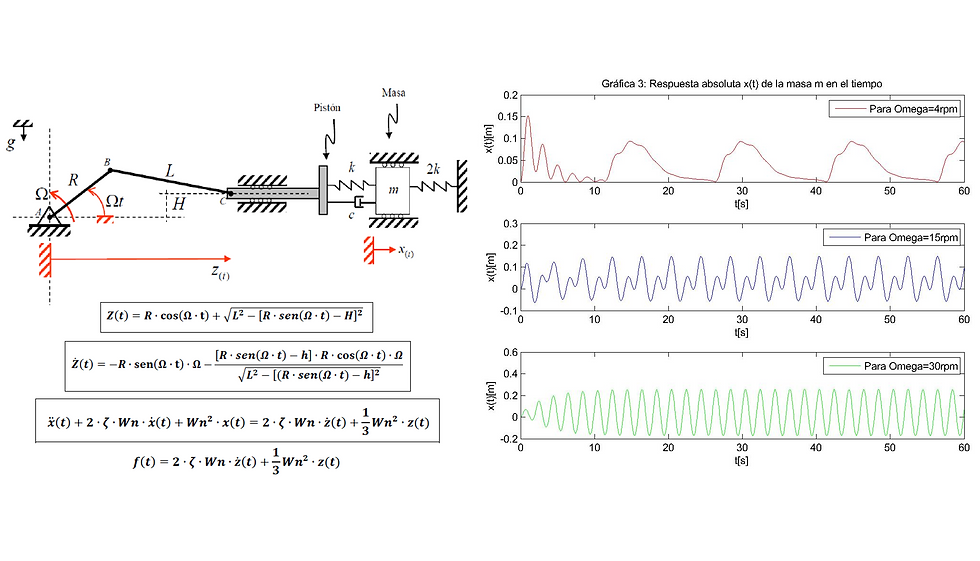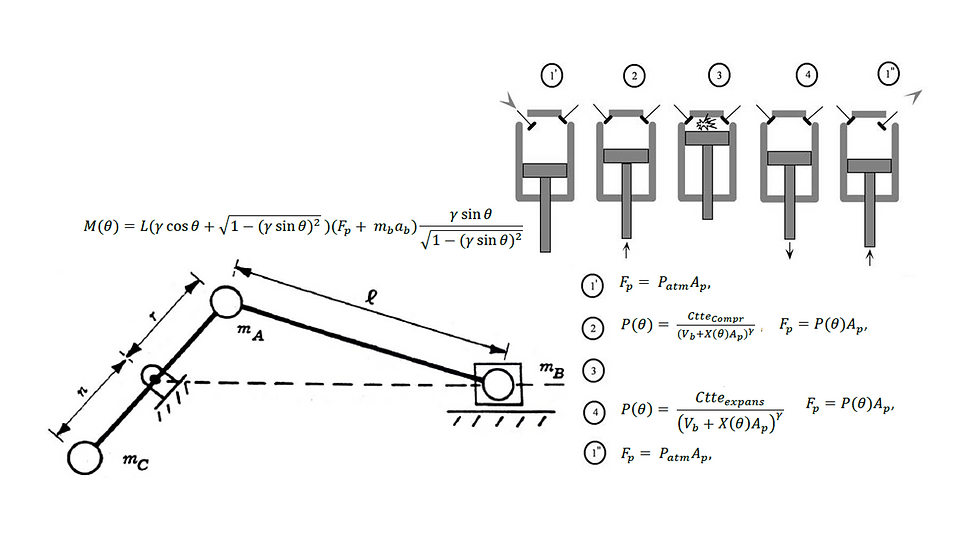Machine Dynamics & Vibrations




November 2016
This was a project for my university course Mechanical Vibrations. I analized a piston-crank-rod mechanism that rotates at a constant angular velocity and excites a mass-spring-damper system. Specifically, I obtained expressions of the piston motion and velocity, as well as the equation of motion of the system as a function of one coordinate.
The problem was solved by simulating it as a system of a mass excited by the movement of a base, the base being the piston whose movement is generated by the rotation of the connecting rod. Once obtained the expression of the movement and acceleration of the piston, the software MatLab was used to solve the differential equation of movement of the system by means of the method of Runge-Kutta of 4th order to obtain the solution of the such, and from this, its speed and its acceleration. Also the Fourier transform was used to obtain the frequency spectrum of the variables.
The excitation of the system, its response, speed and acceleration are periodic. As the frequency of crank motion increases, the period of the oscillations decreases until the critical frequency is reached, where the amplitudes become critical and the mass falls into resonance.
This project for my university course of Machine Dynamics consisted of modeling an engine to estimate its characteristic behavior. The goal was to calculate the Engine Torque for a 1-cylinder engine, and then for one with 8 identical cylinders. In addition, I analyzed the mean and average power as a function of the angular velocity.
The system consists of a piston-cylinder which was modeled as an internal combustion engine and a counter-crank device. Since the movement of the whole system is synchronized, it is a system with only one degree of freedom, so only one kinematic variable is needed to model it. To model this system, the analysis was divided into 2 phases: Thermodynamics and Dynamics.
Thermodynamic analysis: the system was studied as an ideal Otto cycle, from which an expression was found for the pressure felt by the piston in order to know the force acting on it.
Dynamic Analysis: after an exploded view of the system, the drafting of the corresponding free body diagrams, the second law of mechanics application, and the necessary calculations and simplifications, the expression for the motor torque as a function of one single variable was obtained. To get all the Engine Torque and the graphics, MatLab was always used.
Dynamics Project
Vibrations Project
February 2015


